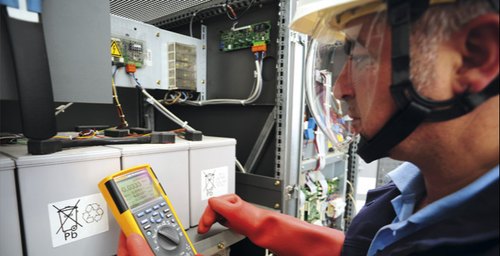Electrical Safety Audit
Electrical safety is a critical aspect of any workplace. Electrical hazards can cause serious injuries or fatalities if not adequately controlled. To prevent such incidents, it is necessary to conduct regular electrical safety audits. An electrical safety audit helps to identify potential electrical hazards and implement corrective actions to mitigate them. In this blog, we will discuss the importance, process, and benefits of an electrical safety audit.

Importance of Electrical Safety Audit
An electrical safety audit is an essential tool to ensure the safety of employees, contractors, and visitors in the workplace. The audit helps to identify potential electrical hazards such as exposed wires, overloaded circuits, and faulty equipment. It also assesses the effectiveness of the electrical safety management system in place and compliance with relevant regulations such as Process Safety Management (PSM) or Occupational Safety and Health Administration (OSHA) regulations.
Process of Electrical Safety Audit
The process of an electrical safety audit involves several steps:Step 1: Preparation
The first step is to prepare for the audit. This includes gathering all relevant documents such as electrical drawings, equipment lists, and electrical safety procedures. The audit team should also be identified, and their roles and responsibilities defined.
Step 2: Site Visit
The audit team should conduct a site visit to identify potential electrical hazards. The team should inspect all electrical equipment, such as circuit breakers, electrical panels, transformers, and motors. The team should also assess the effectiveness of the electrical safety management system in place, including lockout/tagout procedures and training programs.
Step 3: Risk Assessment
Once the potential electrical hazards are identified, the audit team should assess the risk associated with each hazard. This includes evaluating the likelihood of the hazard occurring and the severity of its consequences. The team should also assess the effectiveness of the existing control measures in place to mitigate the risk.
Step 4: Report and Recommendations
Based on the findings of the audit, a report should be prepared that summarizes the audit results, including the identified hazards and the associated risks. The report should also include recommendations for corrective actions to mitigate the identified risks. The recommendations should be prioritized based on the severity of the risk and the resources required for implementation.
Benefits of Electrical Safety Audit
An electrical safety audit offers several benefits, including:- Identification of Potential Electrical Hazards: The audit helps to identify potential electrical hazards that could cause serious injuries or fatalities.
- Compliance with Regulations: The audit ensures compliance with relevant regulations such as PSM or OSHA regulations.
- Improved Safety Performance: The audit helps to improve safety performance by identifying gaps in the electrical safety management system and implementing corrective actions to address them.
- Cost Savings: The audit can help to reduce costs associated with electrical hazards such as workers' compensation claims and equipment damage.
- Enhanced Reputation: A proactive approach to electrical safety can enhance an organization's reputation as a responsible and safe employer.
Contact us at info@thesafetymaster.com for getting a proposal on Electrical Safety Audit
CONTACT NOW